Photographs
of U-190 taken at Bay Bulls and St. Johns, Newfoundland by John Taylor,
RCNVR, of Hamilton, ON and were made available by his son Bill Taylor
|

U-190 surrendered
at sea to the Canadian ships "THORLOCK (K-394)" and "VICTORIAVILLE
(K-684) " on 12 May 1945 and was escorted to Bay Bulls, Newfoundland
arriving 14 May. Her crew was removed and taken to Halifax for
preliminary interrogation. The boat was deemed not seaworthy for
transfer to Halifax and was taken 40 nm away to St. Johns for repairs.
The first three photos show U-190 shortly after arriving at Bay Bulls.
The paint has peeled from her conning tower in these photos. |
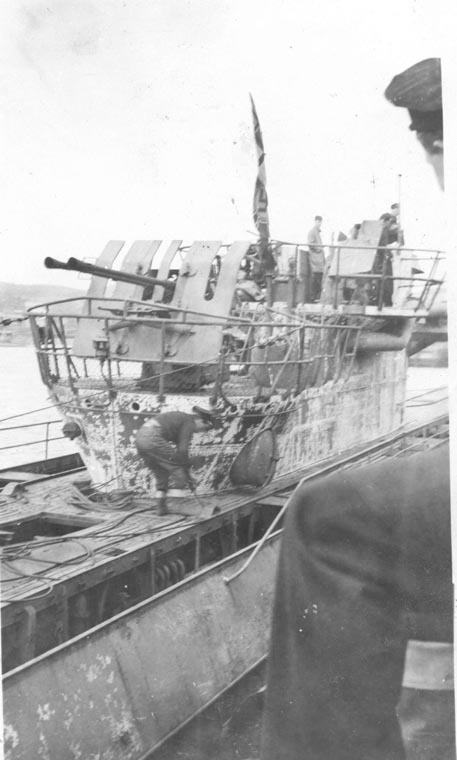
The deck
covers for U-190's upper deck torpedo canisters have been removed (no
upper deck torpedoes/torpedo canisters were carried on the last patrol).
The large pressure proof canister in the base of the extended conning
tower holds a life raft. The Canadian Naval White Ensign flys
above the German Kriegsmarine ensign. |
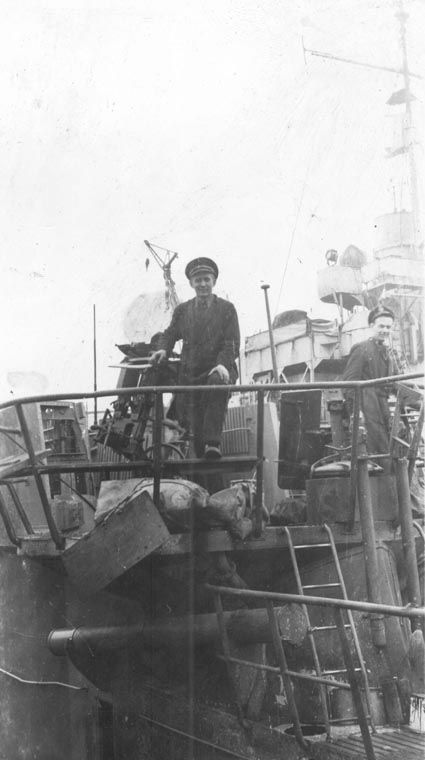
John Taylor
aboard U-190. His right hand is resting on the mount for the 20
mm machine gun which has been dismounted. The port 20 mm gun mount
is missing its armor shields. The tube-like canister mounted on the
side of the conning tower holds spare gun barrels for the twin 37 mm
machine gun. The pressure-proof canister to the right of the ladder
up to the bridge holds ready service ammunition for the 20 mm machine
guns. |
| The next four photos show the boat at HMCS Avalon (the naval base at St. Johns) after it has been repaired and painted. The deck covers are back in place and the 20 mm machine guns have been remounted. The Canadian Naval ensign is flying above the German Kriegsmarine ensign. |
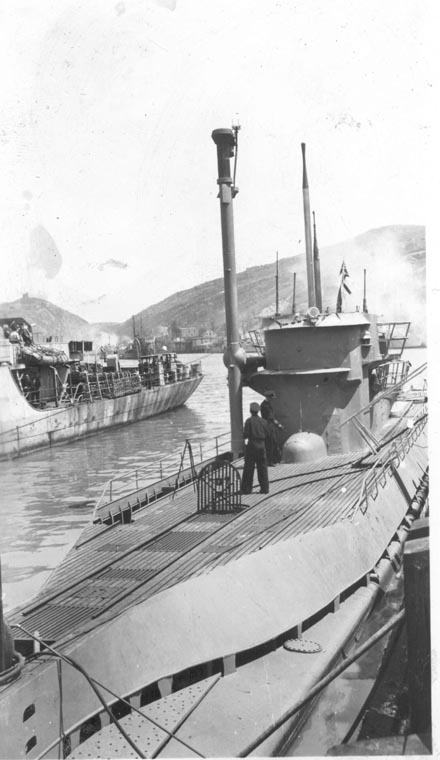
In the photo
above you can see the raised snorkel with the round dipole antenna for
the Wanz radar warning receiver at the top. The broad headed air
search periscope is fully raised and the slim attack periscope is partially
raised. On the starboard forward corner of the bridge the rod-like
longwave antenna which was mounted atop the direction finder loop antenna
is visible. On the deck one can see the rails for the trolley
used to move torpedoes from the upper deck canisters aft around the
conning tower and up to the torpedo loading hatch for the forward torpedo
room. In the foreground you can see the cut-away upper deck which
was installed during the long shipyard period before the boat's last
patrol. |
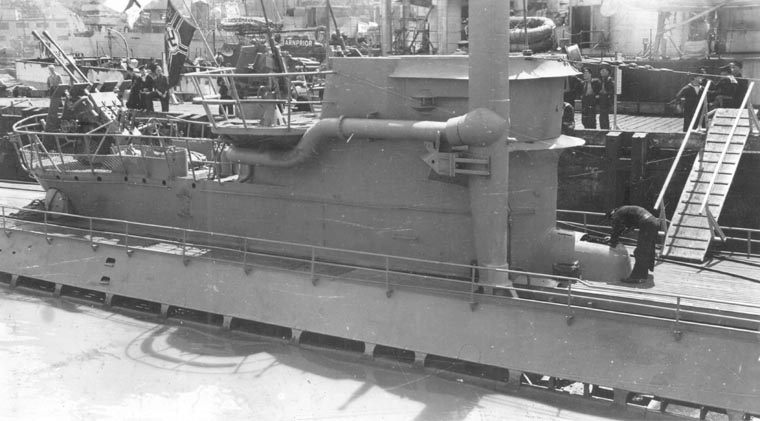
The crewman
on deck is looking into the magnetic compass housing which also contained
connections for emergency air supply and compressed air. The magnetic
compass was mounted outside the pressure hull in this non-magnetic housing
and an optical train led through the pressure hull to the steering station
in the control room, where the image of the rose and azimuth circle
appeared on a ground glass screen. The pipe leading aft from the
snorkel along the side of the conning tower is for intake air.
The exhaust air piping was within the upper deck and connected at the
base of the snorkel. |
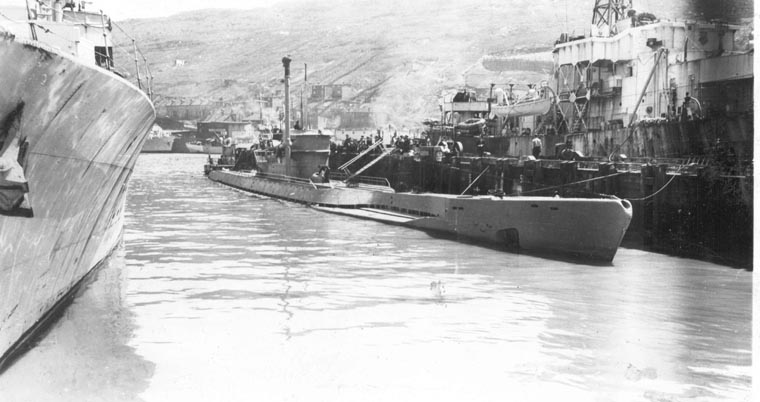
This view
offers a good view of the cut-away upper deck which was intended to
reduce time to dive. |
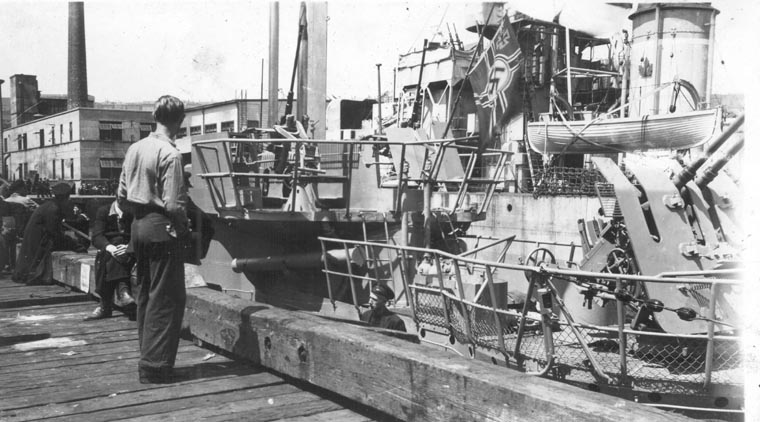
This photo
offers a good view of the bridge with two single 20 mm anti-aircraft
guns (Flak C/38 on L 30/37 mounts) and and the twin 3.7 cm (Flakzwilling
M43U on an LM42U mount) with its armor shields in place. |